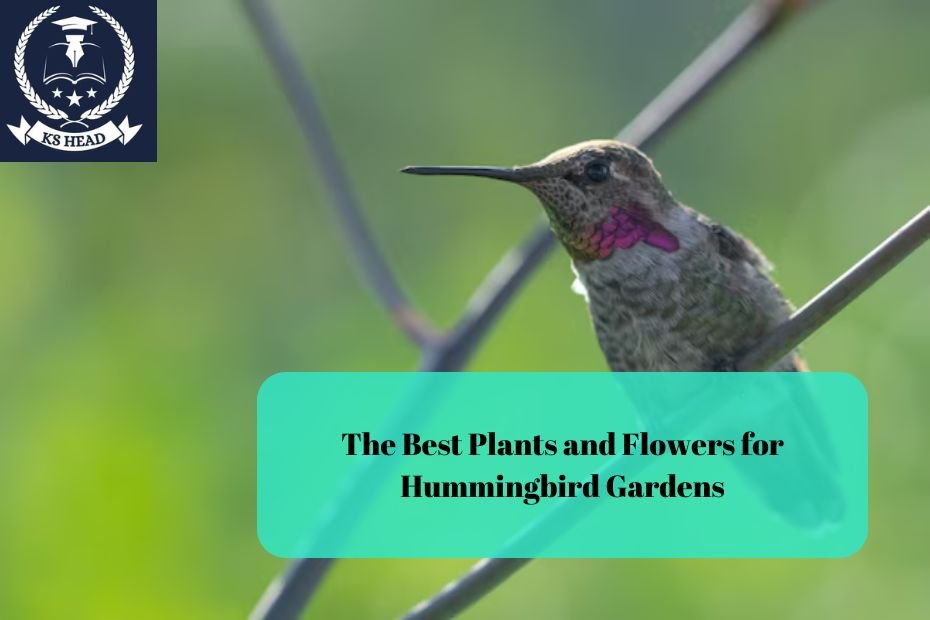Hummingbirds are among the most fascinating and vibrant creatures that grace our gardens. Their iridescent feathers and rapid wing beats make them a joy to observe, and attracting these beautiful birds can transform your garden into a lively sanctuary. Creating a hummingbird garden requires a thoughtful selection of plants that provide both food and shelter. This article will explore the best plants and flowers for hummingbird gardens, along with tips on how to create an inviting habitat.
Understanding Hummingbirds
Hummingbirds are tiny birds belonging to the family Trochilidae, with over 300 species found primarily in the Americas. They are known for their incredible flying abilities, which allow them to hover in mid-air while feeding. Hummingbirds have a diet primarily consisting of nectar from flowers, supplemented by insects and spiders for protein. This means that creating a hummingbird garden revolves around selecting the right plants to attract them.
Key Characteristics of Hummingbird-Friendly Plants
When choosing plants for a hummingbird garden, consider the following characteristics:
- Color: Hummingbirds are particularly attracted to bright, vibrant colors, especially red, orange, and pink. These colors stand out against the green foliage and are more visible to the birds.
- Nectar Production: Choose plants known for their abundant nectar. A high nectar content will keep hummingbirds returning to your garden.
- Shape of Flowers: Hummingbirds prefer tubular or trumpet-shaped flowers, which allow them to easily access the nectar while hovering.
- Blooming Season: To ensure a continuous food source, select a variety of plants that bloom at different times throughout the growing season.
- Native Plants: Incorporating native plants into your garden not only benefits hummingbirds but also supports local ecosystems, providing habitat for other wildlife.
Top Plants and Flowers for Hummingbird Gardens
Here’s a list of some of the best plants and flowers to consider for your hummingbird garden:
1. Bee Balm (Monarda spp.)
Bee balm is a perennial that produces clusters of tubular flowers in shades of red, pink, purple, and white. The flowers attract not only hummingbirds but also bees and butterflies. Bee balm thrives in full sun to partial shade and prefers well-drained soil.
2. Salvia (Salvia spp.)
Salvia is a diverse genus with many species that are excellent for hummingbirds. The flowers are typically tubular and come in vibrant colors like red, blue, and purple. Salvia prefers full sun and well-drained soil, making it a great addition to any garden.
3. Trumpet Vine (Campsis radicans)
Trumpet vine is a vigorous climbing plant that produces large, trumpet-shaped flowers in orange and red hues. Hummingbirds are particularly attracted to this plant, especially during the summer months. It thrives in full sun and can grow in various soil types.
4. Coral Honeysuckle (Lonicera sempervirens)
Coral honeysuckle is a deciduous vine with tubular, red or yellow flowers. This plant is a favorite among hummingbirds and can be grown on trellises or fences. It prefers full sun to partial shade and attracts other pollinators as well.
5. Cardinal Flower (Lobelia cardinalis)
The cardinal flower is known for its striking red blooms that appear in spikes. This perennial thrives in moist, rich soil and is often found in wetlands. It attracts hummingbirds during its blooming season in late summer to early fall.
6. Zinnias (Zinnia spp.)
Zinnias are annual flowers that come in various bright colors. They are easy to grow and require full sun and well-drained soil. Zinnias provide nectar for hummingbirds and can be planted in garden beds or containers.
7. Fuchsia (Fuchsia spp.)
Fuchsias are popular garden plants with pendulous, tubular flowers in various colors. They thrive in partial shade and moist, well-drained soil. Fuchsias can be grown as annuals in colder climates or as perennials in warmer areas.
8. Lantana (Lantana camara)
Lantana is a heat-tolerant perennial that produces clusters of small, colorful flowers. Hummingbirds are attracted to the nectar-rich blooms, which come in shades of yellow, orange, and red. Lantana thrives in full sun and well-drained soil.
9. Yarrow (Achillea millefolium)
Yarrow is a hardy perennial with flat-topped clusters of flowers that attract hummingbirds and other pollinators. It comes in various colors, including yellow, pink, and white. Yarrow prefers full sun and can tolerate poor soil conditions.
10. Hummingbird Sage (Salvia spathacea)
Native to California, hummingbird sage features tall spikes of pinkish-purple flowers that attract hummingbirds. This perennial thrives in dry, well-drained soil and full sun, making it ideal for xeriscaping.
Creating a Hummingbird-Friendly Environment
Beyond selecting the right plants, creating an environment that attracts and supports hummingbirds involves several additional considerations:
1. Provide Water Sources
Hummingbirds require water for drinking and bathing. Consider adding a shallow birdbath or a mister in your garden to provide a reliable water source. Ensure the water is fresh and clean to attract these birds.
2. Minimize Pesticide Use
Pesticides can harm hummingbirds and their food sources. Opt for organic gardening methods and natural pest control solutions to create a safe environment for these birds.
3. Plant in Clusters
Grouping plants together creates a more inviting environment for hummingbirds. This arrangement allows the birds to access multiple food sources easily, increasing the chances of attracting them to your garden.
4. Add Perches and Shelters
Provide perches for hummingbirds to rest between feedings. Small trees, shrubs, or even decorative garden stakes can serve as excellent perches. Additionally, incorporating dense foliage offers shelter from predators and harsh weather.
5. Avoid Hybridized Plants
While hybrids may have appealing features, they often lack the nectar content found in native species. Choosing native plants ensures that hummingbirds have a reliable food source throughout the growing season.
Seasonal Considerations
To maintain a continuous hummingbird presence in your garden, consider planting flowers that bloom at different times throughout the seasons. Here’s a seasonal guide to help you plan:
- Spring: Start with early bloomers like Columbine (Aquilegia spp.) and Bleeding Heart (Dicentra spectabilis). These plants provide food as hummingbirds return from their winter migration.
- Summer: Focus on vibrant blooms such as Bee Balm and Salvia. Adding Zinnias and Lantana will keep the garden lively during the warmer months.
- Fall: Late bloomers like Cardinal Flower and Hummingbird Sage will provide essential nectar as hummingbirds prepare for migration. Consider planting Autumn Joy Sedum (Sedum spectabile) for additional late-season color.
Conclusion
Creating a hummingbird garden is a rewarding endeavor that allows you to connect with nature and support these remarkable birds. By selecting the right plants and providing a welcoming environment, you can enjoy the beauty and joy of hummingbirds visiting your garden. Remember to choose a variety of plants that bloom at different times, provide water sources, and minimize pesticide use. With these tips in mind, your hummingbird garden will flourish, attracting these charming birds and providing them with a vital food source.
FAQs
1. What colors attract hummingbirds the most?
Hummingbirds are most attracted to bright colors, particularly red, orange, and pink.
2. Do I need to provide water for hummingbirds?
Yes, hummingbirds require water for drinking and bathing. A shallow birdbath or mister can attract them.
3. Can I use pesticides in my hummingbird garden?
It’s best to minimize pesticide use, as they can harm hummingbirds and their food sources. Opt for organic methods instead.
4. What is the best time to plant for hummingbirds?
Planting in early spring ensures that flowers bloom when hummingbirds return from migration.
5. How can I keep hummingbirds visiting my garden?
Plant a variety of nectar-rich flowers that bloom throughout the growing season, and provide water sources and shelter.

